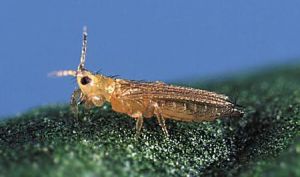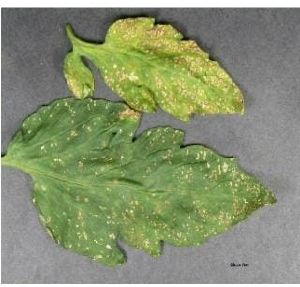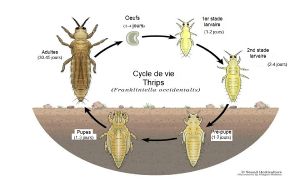Western flower thrip

Thrips are major agricultural pests. They are abundant in fields and particularly in glasshouses. They cause significant economic damage. This is due to the extensive damage they cause, but also to the lack of alternatives to pesticides. They cause damage by feeding on plants and laying eggs on leaves, flowers and fruit. They also act as transmitters of viruses, such as the tomato wilt virus.


Thrips complete their life cycle between 9 and 13 days. The cycle consists of the laying of an egg, two larval stages, two pupal stages and an adult stage. The eggs hatch in 2 to 4 days, the first instar larvae start feeding immediately, then the second instar larvae, which are more active in feeding, appear in 2 to 4 days, after which they move into the soil or leaf litter to pupate. The pupal stage lasts around 6 days and is highly tolerant of most insecticides, after which the winged adults emerge. Biological characteristics such as its small size, wide range of host plants and haploid and diploid reproductive systems make this insect very difficult to control.
In addition, the eggs are laid in hidden places, as are the pupal stages, which protects them from pesticides and makes them difficult to spot.

Annexes
For more information, please consult the following link:
- http://ephytia.inra.fr/fr/C/19237/Biocontrol-Frankliniella-occidentalis-Thrips-californien
- http://taxondiversity.fieldofscience.com/2013/01/frankliniella.html